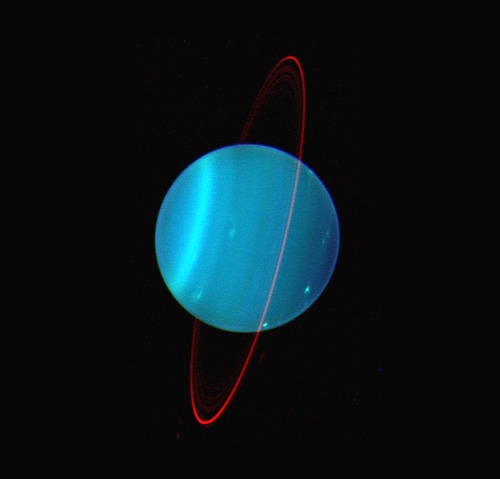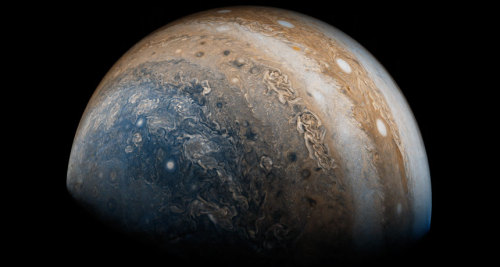Hubble Captured This Image Of Saturn In 2004, A View So Sharp That Some Of The Planet’s Smaller Rings

Hubble captured this image of Saturn in 2004, a view so sharp that some of the planet’s smaller rings are visible.
More Posts from Starry-shores and Others
Megalith Cist Burials Found in Southern India

Archaeologists have uncovered a total of 250 cairn circles in southern India’s trade and industrial center of Kodumanal, which was inhabited from the 400s through first century B.C.E.
The cairn circles were made of giant rocks, or megaliths. Most of the cairn circles were around rectangular chambers built of megaliths, which in turn contained burial cists and three or four bowls or pots. The pottery was likely for offerings placed outside the burial cists, showing a belief system that included something after death.
An impressive ten pots and bowls were recently unearthed in a larger circle made of boulders and rectangular-shaped cists made of stone slabs, surrounding a three-chambered burial. This larger, more complex burial might have been intended for someone important in the community.

The Sun from the Internation Space Station
Ten interesting facts about Uranus
Like the classical planets, Uranus is visible to the naked eye, but it was never recognised as a planet by ancient observers because of its dimness and slow orbit. Sir William Herschel announced its discovery on 13 March 1781, expanding the known boundaries of the Solar System for the first time in history and making Uranus the first planet discovered with a telescope.

Uranus is the seventh planet from the Sun. It has the third-largest planetary radius and fourth-largest planetary mass in the Solar System. Uranus is similar in composition to Neptune, and both have different bulk chemical composition from that of the larger gas giants Jupiter and Saturn.

(The five largest moons of Uranus) Like all of the giant planets, Uranus has its share of moons. At present, astronomers have confirmed the existence of 27 natural satellites. But for the most part, these moons are small and irregular.

Uranus’ moons are named after characters created by William Shakespeare and Alexander Pope. These include Oberon, Titania and Miranda. All are frozen worlds with dark surfaces. Some are ice and rock mixtures. The most interesting Uranian moon is Miranda; it has ice canyons, terraces, and other strange-looking surface areas.

Only one spacecraft in the history of spaceflight has ever made a close approach to Uranus. NASA’s Voyager 2 conducted its closest approach to Uranus on January 24th, 1986, passing within 81,000 km of the cloud tops of Uranus. It took thousands of photographs of the gas/ice giant and its moons before speeding off towards its next target: Neptune.

Uranus has rings: All the gas and ice giants have their own ring systems, and Uranus’ is the second most dramatic set of rings in the Solar System.

Uranus makes one trip around the Sun every 84 Earth years. During some parts of its orbit one or the other of its poles point directly at the Sun and get about 42 years of direct sunlight. The rest of the time they are in darkness.

All of the planets in the Solar System rotate on their axis, with a tilt that’s similar to the Sun. In many cases, planet’s have an axial tilt, where one of their poles will be inclined slightly towards the Sun. But the axial tilt of Uranus is a staggering 98 degrees! In other words, the planet is rotating on its side.

Uranus is approximately 4 times the sizes of Earth and 63 times its volume.

Uranus is blue-green in color, the result of methane in its mostly hydrogen-helium atmosphere. The planet is often dubbed an ice giant, since 80 percent or more of its mass is made up of a fluid mix of water, methane, and ammonia ices.

Uranus hits the coldest temperatures of any planet. With minimum atmospheric temperature of -224°C Uranus is nearly coldest planet in the solar system. While Neptune doesn’t get as cold as Uranus it is on average colder. The upper atmosphere of Uranus is covered by a methane haze which hides the storms that take place in the cloud decks.
source
source
source
Images credit: NASA/ wikipedia

I had a really stupid idea and had to paint it for a friend.

Hubble’s Messier Catalog by NASA’s Marshall Space Flight Center

A rendered view of the night sky from a planet in a globular cluster. Source: Reddit
How quickly do we grow accustomed to wonders. I am reminded of the Isaac Asimov story "Nightfall," about the planet where the stars were visible only once in a thousand years. So awesome was the sight that it drove men mad. We who can see the stars every night glance up casually at the cosmos and then quickly down again, searching for a Dairy Queen. (x)
-
 tontatejas reblogged this · 4 years ago
tontatejas reblogged this · 4 years ago -
 spmall liked this · 4 years ago
spmall liked this · 4 years ago -
 cho-yongchul liked this · 4 years ago
cho-yongchul liked this · 4 years ago -
 demh0es reblogged this · 4 years ago
demh0es reblogged this · 4 years ago -
 jizzstain liked this · 4 years ago
jizzstain liked this · 4 years ago -
 thomas-st-thomas liked this · 4 years ago
thomas-st-thomas liked this · 4 years ago -
 koopstaknicca reblogged this · 4 years ago
koopstaknicca reblogged this · 4 years ago -
 koopstaknicca liked this · 4 years ago
koopstaknicca liked this · 4 years ago -
 tontatejas liked this · 4 years ago
tontatejas liked this · 4 years ago -
 jazzflood reblogged this · 4 years ago
jazzflood reblogged this · 4 years ago -
 demoncleaner66 reblogged this · 4 years ago
demoncleaner66 reblogged this · 4 years ago -
 demoncleaner66 liked this · 4 years ago
demoncleaner66 liked this · 4 years ago -
 failsports reblogged this · 4 years ago
failsports reblogged this · 4 years ago -
 hydrothunder reblogged this · 4 years ago
hydrothunder reblogged this · 4 years ago -
 hydrothunder liked this · 4 years ago
hydrothunder liked this · 4 years ago -
 tricyclesinskirts reblogged this · 4 years ago
tricyclesinskirts reblogged this · 4 years ago -
 tricyclesinskirts liked this · 4 years ago
tricyclesinskirts liked this · 4 years ago -
 nehcterg reblogged this · 4 years ago
nehcterg reblogged this · 4 years ago -
 manicpixievideovixen liked this · 4 years ago
manicpixievideovixen liked this · 4 years ago -
 death-rune reblogged this · 4 years ago
death-rune reblogged this · 4 years ago -
 goatcommittee liked this · 4 years ago
goatcommittee liked this · 4 years ago -
 mugen-the-black reblogged this · 4 years ago
mugen-the-black reblogged this · 4 years ago -
 mugen-the-black liked this · 4 years ago
mugen-the-black liked this · 4 years ago -
 ashtray-mouth reblogged this · 4 years ago
ashtray-mouth reblogged this · 4 years ago -
 ashtray-mouth liked this · 4 years ago
ashtray-mouth liked this · 4 years ago -
 gotankgo reblogged this · 4 years ago
gotankgo reblogged this · 4 years ago -
 gotankgo liked this · 4 years ago
gotankgo liked this · 4 years ago -
 cocteutwins liked this · 4 years ago
cocteutwins liked this · 4 years ago -
 iggypoop liked this · 4 years ago
iggypoop liked this · 4 years ago -
 mistressorinoco liked this · 4 years ago
mistressorinoco liked this · 4 years ago -
 troger liked this · 4 years ago
troger liked this · 4 years ago -
 nandras reblogged this · 4 years ago
nandras reblogged this · 4 years ago -
 alexunderbear liked this · 4 years ago
alexunderbear liked this · 4 years ago -
 welsholdgit reblogged this · 4 years ago
welsholdgit reblogged this · 4 years ago -
 bigwelshbear liked this · 4 years ago
bigwelshbear liked this · 4 years ago -
 wachsurfer2018 liked this · 4 years ago
wachsurfer2018 liked this · 4 years ago -
 v-m-smith reblogged this · 4 years ago
v-m-smith reblogged this · 4 years ago -
 zen-waves reblogged this · 4 years ago
zen-waves reblogged this · 4 years ago -
 searchingforthekey liked this · 4 years ago
searchingforthekey liked this · 4 years ago -
 v-lagopus reblogged this · 4 years ago
v-lagopus reblogged this · 4 years ago -
 wanderinstar reblogged this · 4 years ago
wanderinstar reblogged this · 4 years ago -
 ambivalen-tt liked this · 4 years ago
ambivalen-tt liked this · 4 years ago

Amateur astronomer, owns a telescope. This is a side blog to satiate my science-y cravings! I haven't yet mustered the courage to put up my personal astro-stuff here. Main blog : @an-abyss-called-life
212 posts













